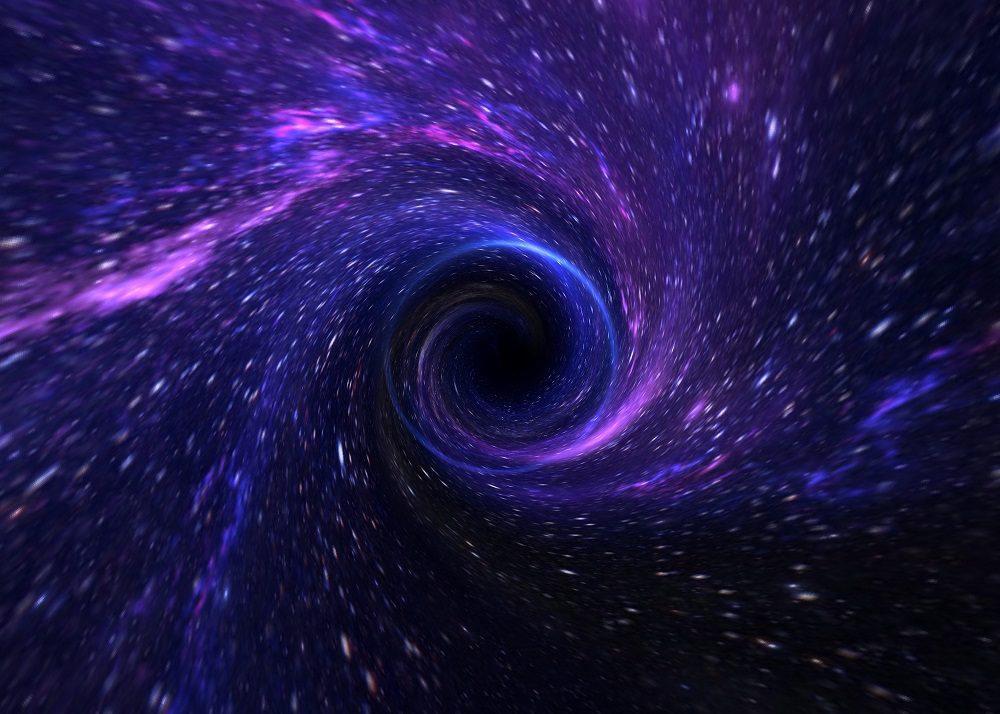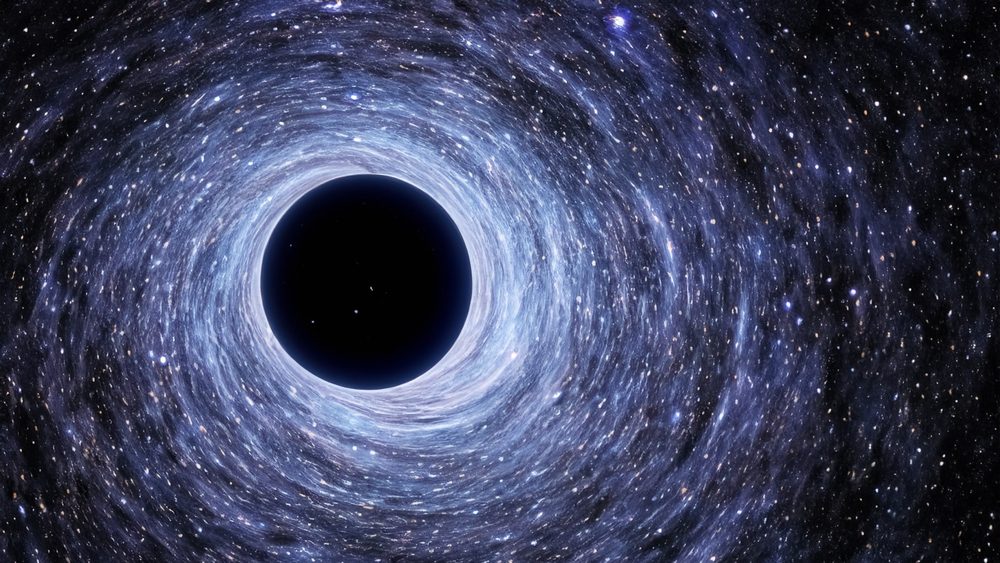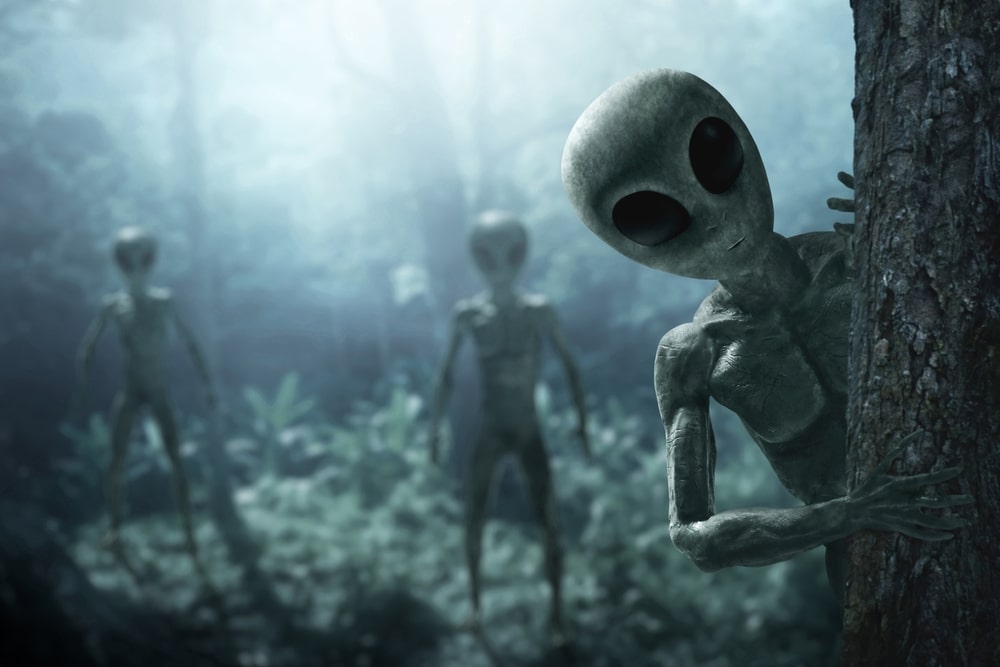How many things do YOU know about black holes? Are they really scary, or is this just a myth?
What are black holes? This should be the first question of the article, to which you will definitely get an answer. They are the only so-called objects in the Universe that can trap light through gravity. Black holes are so big that nothing can escape them! According to scientists, they are formed when a massive star dies and becomes so dense that it swallows space and time. Brrr! This thought definitely gives us chills down the spine.
Despite decades of research, black holes remain a mystery, an outer-space danger that could destroy the world as we know it in a matter of milliseconds. Since it’s a hot topic these days, we at Science in the World decided to closely approach it, so we present you some jaw-dropping reasons we should all be afraid of them!

1. They can create new universes
Wait, what? These scary outer space things can create another universe? Sheesh, that’s crazy and amazing at the same time! While this topic is still on the agenda for scientists, we can’t be sure if and how many other universes exist.
But one thing we know for sure: The way this works can be explained very simply by saying that, when you look at mathematics, our universe today has certain fortunate circumstances that came together to generate life. The world as we know it wouldn’t be here if you even slightly altered these circumstances.
In theory, these circumstances may change and give rise to a new, slightly modified universe since the singularity at the center of black holes breaks the fundamental principles of physics.
2. Inside a black hole time still exists
Believe it or not, this statement was scientifically proven: inside a black hole, time still exists. Of course, it is different than ours, but still! The black hole’s singularity, which is at its core, is where time is moving. Since doing so would mean traveling backward in time, nothing can escape from a black hole!
3. Black holes aren’t working like vacuums
…But that doesn’t mean they aren’t dangerous! For a lot of us, it was explained that black holes suck everything into them and then expand until they create other universes. But this is nothing but a myth! They are simple objects, but they have a huge gravitational force that’s bigger than anything else.
We have a simple explanation for you to understand how things work better. For example, imagine replacing the Sun with a black hole. Would Earth stop existing anymore? Absolutely not! The Earth won’t be swallowed by the black hole; in fact, it will continue orbiting around it, just as it does with the Sun.
Furthermore, according to science, partner stars release some of their mass as stellar wind, and this wind’s contents eventually fall into the grasp of their insatiable next-door neighbors, black holes, who eventually consume the material.
4. Every galaxy has a supermassive black hole
If black holes are scary, what about supermassive ones? Well, the good news is that if you fall into one, you might be able to survive. Despite having a greater gravitational pull, they are not as deadly as a tiny black hole because the force of stretching is less intense. Now, you will survive, but you will never manage to escape from the event horizon; therefore, you will never be able to report your experience to anybody else.
From a scientific point of view, we will never be able to find out what’s inside a supermassive black hole because the laws of physics break down. At the event horizon, time stops moving, and at the singularity, gravity becomes limitless.
Before moving forward to the next point of the article, it’s interesting to point out that black holes will take years to disappear completely; in fact, they will be the last surviving things in outer space after everything else vanishes. Scary right?
Whether you want to learn more about black holes or you want to win the next trivia game, this book is so tremendous that it’s a must in everybody’s bookcase. Available in three formats: Kindle, paperback, and hardcover, Black Holes and Time Warps: Einstein’s Outrageous Legacy can be found on Amazon at an excellent price between $10 and $30. Even though it has 624 pages, you won’t know when you’ll get to the end of it!
5. At the edge of a black hole time slows down to a near standstill
Let’s consider this hypothetical situation in which you get closer to the orbit of a black hole, stay there for a while, and then return to Earth. For you, it will seem like there were just a couple of hours, but on Earth, millions of years have passed. And you will be petrified that your house, family, and everything else you know will be gone, and everything will seem like a distant memory. Sheesh, that’s something!
6. Anything will become a black hole eventually
After we learned that black holes are in fact a huge gravitational force that can swallow anything around them, including the Sun, you probably thought about all the bad things. And with a reason! Well, theoretically, we humans can turn anything into a black hole. How does this work? Let’s find out!
For example, if you reduced the size of our Sun to only 3.7 miles (6 km) wide, all of its mass would have been compacted into a tiny area, creating a black hole and making the object very dense. The same concept might be applied to Earth or your own body.
However, there is only one known process that can create a black hole, and that is the gravitational collapse of a star that is 20 to 30 times bigger than the Sun.

7. They are the most powerful energy source
According to scientists, one black hole can generate more energy than the Sun itself. How can this be possible? Well, the disk of material that orbits around the black hole is moving so fast that it heats up to billions of degrees Fahrenheit, which is capable of converting the material’s mass into energy in the form of blackbody radiation.
For a better understanding of this, think about nuclear fusion, which can convert about 0.7% of mass into energy. Now, a black hole can convert 10% of its mass into energy, which is a huge difference. Now, let this idea sink into your head…
8. Einstein wasn’t the one who discovered black holes
While a lot of rumors say that Einstein was the one who discovered black holes, the truth is that his theory just predicted them. The one who used Einstein’s theory to develop a study based on black holes and demonstrate their existence was Karl Schwarzschild. He did this in 1915, the same year Einstein released his relativity theory.
Schwarzschild’s findings gave rise to the phrase “Schwarzschild radius,” which describes how much an object would need to be compressed in order to become a black hole. Black holes weren’t called like this until 1967, but it’s interesting to pinpoint the fact that British polymath John Michell anticipated the possibility of “dark stars” that may be so enormous or squeezed that light couldn’t escape from their gravitational attraction. Who knew that Michell’s dark stars would become what we know today as “black holes”?
The topic of black holes made you curious about other stuff in our universe. We’ve got your back! Check out another article that will tickle your curiosity even more! And we rely on that, so you will come back tomorrow for even more scientific facts. 7 Things From Outer Space That Will Destroy the World















2 Responses
Why can’t we use a black hole as a source of energy?
The more you know, the more you want to know. and most of us never stop wanting to know, more and more and more. I scared myself when i was 6 yrs old carrying a bucket of coal to heat the house as it was chore time and dark as dark…I looked up into the universe and wondered how far it went. Soon my little 6 yr old brain had frightened myself as i realized that it went on forever.and what was forever, so i took that bucket of coal in the house as fast as i could to try to add some reality to my little freaked out mind. Turned on the TV and tried to stop thinking. The little rascals helped me forget of forever out in space.